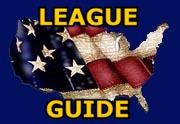BUTCH KELLY I
Butch Kelly I – Modern Draft League Manager
Butch is an AIM (Advanced Injury Management) micromanager designed to handle modern (circa 1990) draft league-type teams. The cutoff point for using Kelly would be roughly 1985 or so, plus or minus 2-3 years. While both Kelly and Kelly II are nearly identical, this version ranks closers by their actual save totals and not grade. So he will use a reliever who had more saves over another reliever who was higher graded but had fewer saves. Additionally, while Kelly is a little more aggressive than most replay managers, he is not a “APBA ball”-type micromanager. He tries to be more historically-grounded. Among the strategies and approaches of Kelly’s to note are:
1) Starting Pitchers: Kelly does not set aside a rotation and will, if the occasion calls for it, use starters (defined roughly as having more starts than relief appearances) in relief. However, this practice is quite limited and will usually only occur if the team’s bullpen is somewhat ragged or shaky. Even in those circumstances, however, this will likely only occur late (7th or later) and in close games. Exceptions to this will be with those starters who had a relatively high number of relief appearances. Kelly will, though, save one potential starting pitcher from being used in relief, emergencies excepted. So, if you wish to use a particular starter for a key upcoming game or wish to absolutely prevent a starter from being used, you should bench him (note: if the starter had zero relief appearances, he will not be used except, again, in emergencies (i.e., injury or ejection of a pitcher and no other rested reliever available).
2) Base Stealing: Kelly does NOT consider, except for steals of third and home, the steal chance rating of a potential stealer. He pretty much permits runners to go on their own. However, the runners SALF rating (SB attempts divided by singles+walks+HBP), score, inning, outs, and a number of other factors determines whether the runner is given the green light.
3) Kelly will PH, PR and sub defensively for star players in routs, He will also try to keep star players on the bench as long as possible, using them only if the game is on the line late (8th inning onward, e.g., tying run on base or at home). He prefers using “itchy” players in lopsided games and will only use non-regulars (i.e., plate appearances under 350).
4) Kelly takes heavy advantage of the platoon advantages. He will use the “one batter” relief specialists, chiefly lefthanders, extensively.
5) He makes extensive use of the double switch and is loathe to let relief pitchers hit.
6) Kelly has a quick hook with relievers, often using 3-5 of them, particularly in one-sided games. This “rotating relievers” strategy is dependent on a healthy bullpen. Otherwise, he will likely try to permit relievers to go 2-3 innings.
7) As was mentioned above, Kelly ranks closers by their actual save totals. Closers are broadly defined as having 12 or more saves while “superclosers” must have 20 or more. He will employ a “weighted save” definition for relievers in save situations when no closer or supercloser is available. This measure is determined by considering the pitchers actual saves plus his grade. He will employ a “weighted save” definition for relievers in save situations when no closer or supercloser is available. This measure is determined by considering the pitchers actual saves plus his grade.







